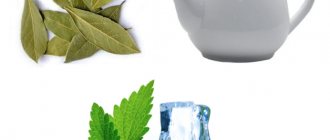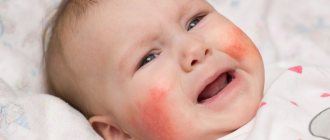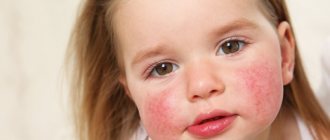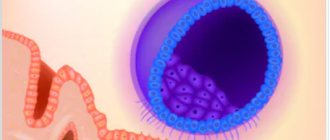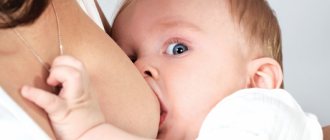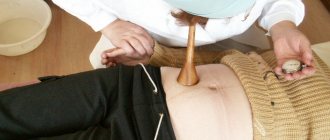Last update: 02/21/2021
Allergic reactions often cause various skin manifestations - rash, redness, irritation or swelling. Allergic dermatitis can often be difficult to distinguish from other skin conditions, such as infections or hives. Allergies are especially often confused with prickly heat, which occurs due to poor hygiene or temperature conditions.
What is the difference between prickly heat and allergies and how to determine which disease a child or an adult is suffering from? In order to answer this question, it is necessary to know the causes and symptoms of each disease and the characteristics of their course. In addition, the photos of heat rash and allergies presented on this page will help you.
Causes and symptoms of allergies
Many different factors can cause an allergic reaction - food, household chemicals, animal hair and pollen, fabrics, medications and even ultraviolet radiation. Sometimes even this knowledge is enough to distinguish allergies from prickly heat. If you've recently made changes to your usual diet, started taking new medications, or changed brands of laundry detergent, these factors are likely to be the cause of your breakouts. However, allergies can also arise unexpectedly - for example, if you have never previously noticed a negative reaction of the body to dog hair, and have only recently encountered this problem. In this case, special tests can help - they will not only help establish the presence of an atypical reaction to certain irritants, but will also help identify a specific allergen.
Usually, to get rid of the symptoms of prickly heat, it is enough to eliminate the factors that cause waterlogging and contamination of the skin - most often this is a lack of hygiene, poor ventilation of the skin due to clothing, or staying in hot and poorly ventilated rooms. In most cases, symptoms quickly disappear after this. An allergic rash is much more persistent: it is difficult to treat and does not always go away even after eliminating contact with the allergen.
Prickly heat
Let's start with the concept. Miliaria is an irritation caused by excessive sweating (usually caused by humid, hot weather).
Causes
Rashes with miliaria in a child can appear as a result of:
- insufficient skin care;
- being in a hot room;
- frequent application of “heavy” lotions, oils, creams (skin ventilation is impaired);
- excessive wrapping;
- development of inflammatory disease and fever;
- rare hygiene procedures.
Location of the rash
The rash occurs due to skin irritation caused by prolonged exposure to sweat. Most often it is localized in the folds of the skin due to poor ventilation: on the neck, back of the head, groin and armpits.
Causes and symptoms of prickly heat
Heat rash usually occurs when your skin becomes overheated and too wet, for example if you wear clothes that are too tight or are in a particularly hot and humid climate. Heat rash in newborns and infants often occurs when swaddling is too tight or low-quality diapers are used. This leads to one of the main differences between prickly heat and allergies - the limited localization of the rash. Typically, the symptoms of this disease appear locally - where clothing hides the skin, on the elbows or knees, in the area of skin or fat folds, under the hair. Allergy can affect both small areas of the skin and the entire surface of the body, since it is a systemic reaction of the body. In addition, the development of heat rash is often preceded by skin irritation - for example, friction from a tight collar or scarf.
The symptoms of the two diseases are very similar: the appearance of a small papular and/or vesicular rash. Most often, the affected skin turns red and swollen, becomes sensitive and irritated.
Features of treatment and preventive measures
To prevent the occurrence of prickly heat, it is imperative to follow the rules of hygiene . Bathe your baby, use powder, zinc paste or any other means recommended by the doctor. Clothes should be made only from natural fabrics, no synthetics. Also, do not wrap your child too tightly.
We suggest reading an article about how to treat heat rash in a newborn.
For allergic rashes, it is important to exclude the allergen . Ventilate the room in which the child is located more often, do wet cleaning, follow a special diet (consult your pediatrician), and use only hypoallergenic household chemicals. Contact your doctor, he will give all the necessary recommendations and prescribe some medications if the situation requires it (antihistamines, etc.).
Treatment of diseases
Each of these diseases requires its own approach to treatment, but the basis of therapy is the elimination of factors that cause skin irritation. In the case of allergies, anti-inflammatory drugs (local, including hormonal) can be an effective remedy, as well as desensitization - a gradual decrease in sensitivity to the allergen. Miliaria usually does not require special treatment, unless it is caused by systemic disorders in the endocrine, nervous or cardiovascular systems.
In order to get rid of the most unpleasant symptoms of the disease, you should use special cosmetics, in particular La-Cri products. They do not contain substances that can cause an allergic reaction, and the main active ingredients in them are extracts of medicinal plants. La-Cri products are excellent for caring for irritated and painful skin in both adults and children.
Allergy
An allergy is the body's increased sensitivity to a substance.
Causes
An allergic reaction occurs due to hypersensitivity to a specific allergen:
- Food;
- household chemicals;
- medicines;
- flowers and other plants, fluff and pollen (rarely manifested as a rash on the skin), etc.
Often, rashes in children occur after the introduction of any food products to the menu. A few hours after eating, you can observe the first symptoms of an allergic rash.
Location of the rash
Most often, rashes appear on the cheeks of a newborn (diathesis), but other parts of the body can be affected - the stomach, arms, etc.
Symptoms
How to understand that it is an allergy? It can make itself felt either in a few hours or in a week. The rash resembles small blisters with liquid inside. Flaky spots and cracks may also appear.
Other symptoms: runny nose, cough, headache, body aches and gastrointestinal disturbances. The baby may become capricious and whiny, and refuse food.
Clinical researches
Clinical studies have proven the effectiveness, safety and tolerability of the products. The products are suitable for daily care of children's skin with mild to moderate forms of atopic dermatitis and during remission, accompanied by a decrease in the quality of life of patients.
Sources:
- Sukolin Gennady Ivanovich, Clinical dermatology. A short guide to the diagnosis and treatment of dermatoses, publishing house: Notabene, 2017
- Pankratov Valentin Gavrilovich, Pankratov Oleg Valentinovich, Infectious dermatology in the practice of primary care physicians, New Knowledge Publishing House, 2015
- Mancini A. J., Krouchuk D. P., Pediatric dermatology. Publisher: Practical Medicine, Directory, 2018
- Kildiyarova Rita Rafgatovna, Pediatrician for every day. Guide for doctors, publishing house GEOTAR-Media, 2021
Photos of heat rash
Photo album on the diseaseNEW LEVEL
One of the issues that often causes concern for young mothers is rashes in the baby. Indeed, the rash may be physiological in nature and not require any intervention, or it may indicate health problems in the baby. This is especially important for nursing mothers in order to understand whether a reaction to some components of breast milk is involved in the baby’s condition... How to figure it out?
Neonatal acne is associated with the action of maternal hormones. The restructuring of the baby's hormonal system provokes increased sebum production.
Neonatal acne is not a contagious (infectious) disease, moreover, this condition is not considered a disease. Rather, it is a functional state that is caused by the process of adaptation of the baby’s body to new living conditions. This phenomenon does not require any action from the mother, including for a nursing mother, it does not imply any special diet.
In general, acne in babies is similar to acne in teenagers. The rashes look like pustules - purulent pimples. Acne appears in the first days or weeks of life (usually around 3 weeks after birth). Localization of the rash is the skin of the cheeks, forehead, chin. Sometimes pimples appear on the eyelids, neck, upper chest and scalp (on the scalp). The intensity of the rash is moderate; newborn acne does not cause physical suffering to the baby. Rashes, as a rule, disappear without a trace after a few weeks or months; less often, pimples persist for up to a year.
Less common are so-called baby acne . Male children are more often affected. Acne first appears between 3 and 6 months of age. Infantile acne manifests itself in the formation of various elements - papules, pustules. It is even possible that purulent cystic formations may form. Infantile acne rashes are most often localized on the cheeks. In some babies, the manifestations of infant acne go away by the age of one year, but more often the rash persists up to 3, and sometimes up to 5 years.
The main difference between acne and allergic rashes is the location, type of rashes and the general condition of the child. With acne, the rash is usually located on the face. With allergies, rashes can be located throughout the body. With the development of prickly heat , on the contrary, a small rash forms on the skin of the body, but there are no rashes on the face.
There are also differences in the form of rashes - with acne, the rashes will include pustules (vesicles with purulent contents), but with allergies and prickly heat, purulent pimples do not form. When an allergy occurs, large red spots or a small red rash appear on the baby's skin; there are no white purulent tops.
We also take into account the child’s well-being - the skin, inflamed due to allergies , itches, the baby is worried, scratches pimples, and is capricious. acne rash does not bother the child, he behaves as usual, eats and sleeps well. With allergies, as a rule, there are other signs of illness: the child’s stool may change, often there is also redness of the cheeks, rough spots all over the body, severe gas formation, abdominal pain, and vomiting.
For clarity, let's summarize this data in one table:
| What is this? | what does it look like | where is | baby's well-being | mom's actions |
| acne | there are blisters with purulent contents (white heads) | on the face, less often on the head, neck and chest | does not change | no, just wait, acne goes away on its own |
| prickly heat | small red rash, without purulent blisters | on the body but NOT on the face | itching is possible, but there will be no sudden changes in well-being | provide air access to the affected areas, do not overwrap, can be dried by bathing with medicinal herbs, use powder in the folds |
| allergy | rashes of various types, but without purulent blisters | all over the body | severe itching and restlessness, there may be other signs of problems: changed stool, rough skin, abdominal pain | First of all, identify the allergen and try to eliminate its exposure. It is advisable to contact an allergist. |
Neonatologist Victoria Emelyanova, edited by IBCLC Irina Ryukhova for “New Level”
If you want to learn more about allergies in infants, you can watch the recording of our webinar “Allergies in infants to breastfeeding”
Go to other interesting articles on breastfeeding for mothers
Main differences
How to distinguish heat rash from allergies (allergic dermatitis)? The first difference is the cause of the disease. Miliaria appears due to overhydration of the skin; allergies (allergic dermatitis) are a reaction to contact with an allergen.
The second is localization locations. Miliaria is most often localized in closed areas of the body or in the folds of the skin; it is very rare for prickly heat to appear on the face. Foci of allergic dermatitis appear either where the skin comes into contact with the allergen or on the face, most often on the cheeks or forehead. Sometimes an allergic rash covers the entire body.
The third difference is the presence of accompanying symptoms. Miliaria is not accompanied by any associated symptoms. In severely advanced cases of prickly heat, ulcers may appear. Allergic dermatitis may be accompanied by symptoms such as pain in the eyes, swelling, sneezing or coughing.
The fourth difference is the nature of the rash. Upon careful examination, in case of allergies, the rash is continuous in nature. At the base of the lesion there is reddened swelling. Miliaria does not have continuous reddened lesions, most often these are individual or grouped blisters with liquid contents.
In order to accurately determine prickly heat or allergies at home, it is necessary to analyze all available information. Allergic dermatitis and miliaria have different treatment options. If prickly heat in children does not need to be treated, since it goes away on its own, then the allergy requires the use of antihistamines and the exclusion of repeated contact with the allergen, therefore, if it is not possible to accurately determine the disease at first glance, it is better to consult a doctor. Be healthy!
Miliaria in children
Miliaria (miliaria) develops in children in conditions of high humidity and ambient temperature due to the insufficiency of the thermoregulation system and the functioning of the sebaceous glands.
Factors predisposing to the development of heat rash in newborns:
- imperfection of thermoregulation;
- thinness and vulnerability of the epidermis;
- reduced immune defense of the baby's skin;
- well-developed network of skin blood vessels;
- narrowed ducts of the sebaceous glands;
- female gender of the child;
- non-compliance with hygienic rules for caring for infants;
- excessively wrapping children.
There are 3 forms of miliaria:
- crystalline;
- red;
- deep.
The prickly heat rash is represented by blisters or nodules (in the red form), the color is pale pink. More often it appears in places of increased overheating of the skin under clothing, in folds. The rashes do not flake or itch. Miliaria quickly goes away even without the use of medicinal ointments, subject to proper hygiene.
Why does sweat rash occur?
Miliaria occurs due to blockage of the ducts of the sweat glands, which is facilitated by the structural features of the skin of young children and external conditions: if the child overheats and, accordingly, sweats a lot. Thus, a rash may appear if a child spends a long time in a hot room with high humidity, is wrapped up too warmly when walking, is dressed in tight clothes made of synthetic fabrics, or is wearing diapers in the heat. Sweat is not removed outside, remains in the skin and causes redness and rashes.
It is important!
Heat rash can be caused by frequent or excessive use of baby creams, especially fatty ones, and baby cosmetic oils.
Heat rash often occurs in children with a thick build and pronounced folds on the arms and legs.
As for the characteristics of the skin of newborns, it is still thin, and the excretory ducts of the sweat and sebaceous glands continue to form, so it cannot fully perform protective functions and quickly loses moisture. All this leads to the fact that the ducts of the sweat glands are easily clogged. In addition, babies cannot say that they are hot or take off uncomfortable tight clothes, and mothers tend to dress them warmer to be on the safe side.
